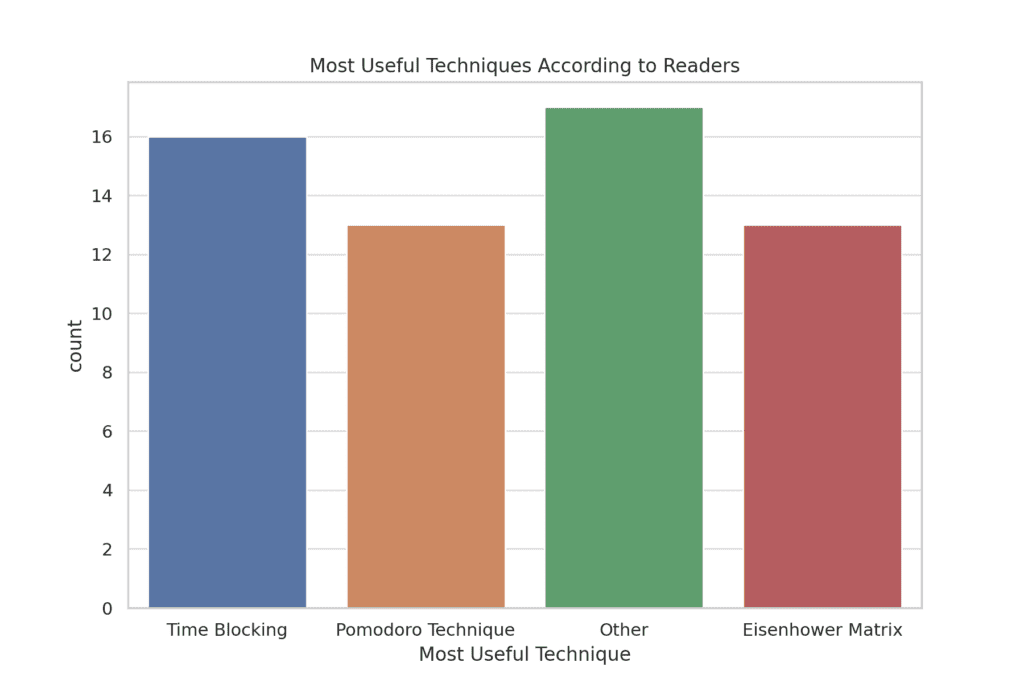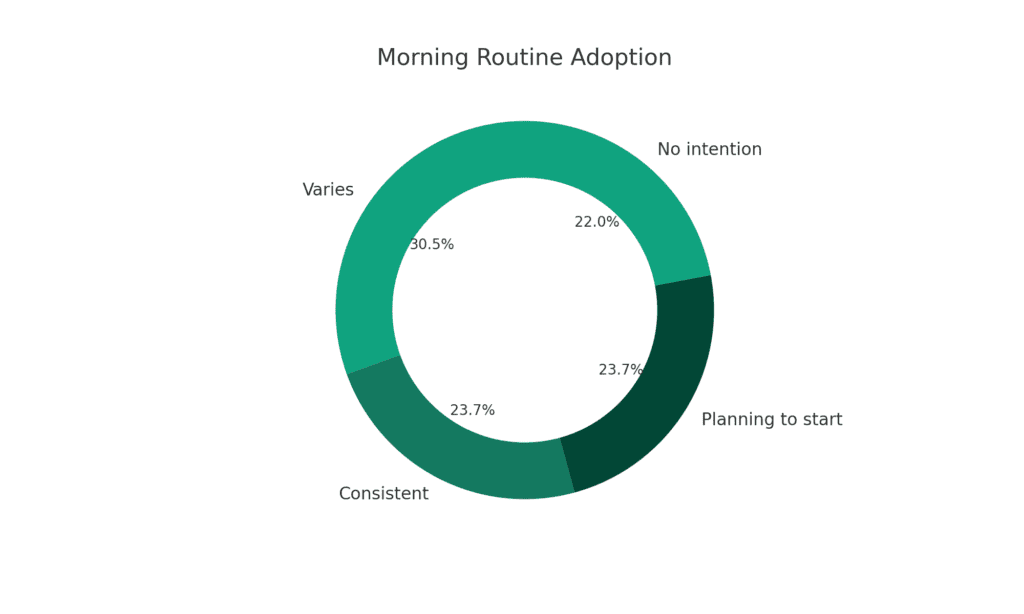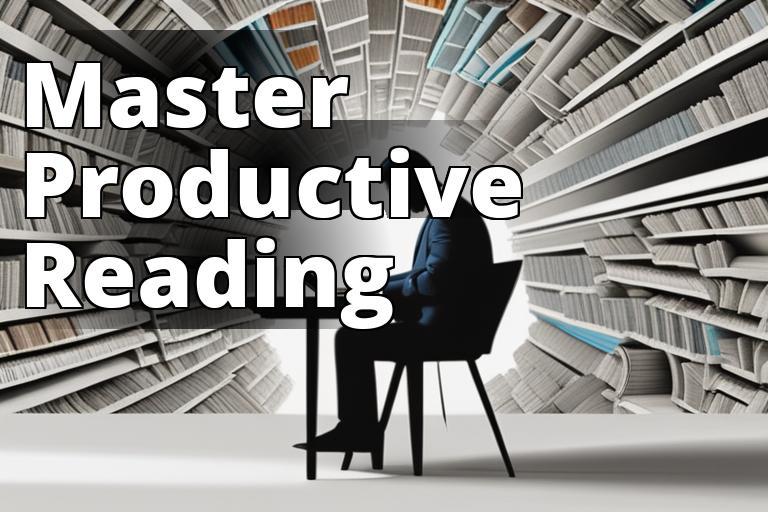The Ultimate Guide to Personal Productivity: Introduction
Why Personal Productivity Matters: A 21st-Century Imperative
Welcome to the world of personal productivity, a realm where time bends, tasks vanish, and life flourishes. It’s not a fantasy; it’s a way of living that’s attainable by anyone willing to learn, adapt, and evolve. The 21st century is a hurricane of distractions, commitments, and ambitions. The ability to navigate this storm by being productive isn’t just a skill; it’s a necessity.
Who is This Guide For?
Are you a busy professional, overwhelmed with meetings and deadlines? Are you a student, struggling to manage your academic and personal life? Are you a parent, juggling between work commitments and family time? This guide is for you. This comprehensive roadmap aims to equip:
- Busy Professionals: Time is money, make every second count.
- Students: Master the art of effective studying.
- Parents: Balance work and family without losing sanity.
- Entrepreneurs: Create more by doing less.
What is Personal Productivity?
Let’s debunk a myth right off the bat: productivity is not busyness. As Tim Ferriss eloquently puts it, “Productivity is not just about doing more; it’s about creating more impact with less work.” In essence, being productive means accomplishing more by doing less.
Goals of This Article
- Actionable Techniques: Cut through the fluff and get straight to tactics you can implement today.
- Tool Introduction: Discover apps and platforms that can automate and streamline your tasks.
- Pitfall Avoidance: Learn the common traps that people fall into and how to sidestep them.

Why Most Productivity Advice Fails
There’s no shortage of productivity advice out there, from blogs to self-help books. But most of this advice fails because it’s too narrow in its approach. Many focus solely on specific tools or techniques, failing to provide a holistic view of productivity. This guide seeks to rectify that by presenting a comprehensive approach that adapts to diverse lifestyles and needs.
The Gap We Aim to Fill
- Holistic Approach: We don’t just give you a fish; we teach you how to fish.
- Diverse Roles: Tailored advice for professionals, parents, and students.
- Practicality: Actionable tips and real-world case studies over theoretical musings.
Expert Insight
David Allen, the author of “Getting Things Done,” advocates for a stress-free approach to productivity. He states, “Your mind is for having ideas, not holding them.” This guide aims to free your mind by offering structured systems for productivity.
The Journey Ahead
This guide is divided into multiple parts, each focusing on different aspects of productivity, from foundational principles to advanced strategies. Each section aims to provide actionable insights and practical advice that you can apply immediately.
My Personal Experience
I’ve journeyed through the productivity landscape, experimenting with numerous methods, tools, and philosophies. What I’ve realized is that productivity isn’t a one-size-fits-all solution; it’s a personalized system that evolves with you.
Key Takeaways
- Personal Productivity is a Skill: And like any skill, it can be learned, practiced, and mastered.
- It’s About Impact: Being productive is about achieving more with less.
- Comprehensive Guide: This guide offers a holistic view of productivity, covering its many facets.
So are you ready to unleash your productivity potential? Let’s dive in and discover the strategies, tools, and mindsets that can elevate your life to a new dimension of efficiency and effectiveness.
Embark on this transformative journey with us. By the end of this guide, you’ll not just be doing things differently; you’ll be a different person altogether. Ready to take control of your life? Let’s go!
This introduction aims to set the stage for a transformative journey into the world of personal productivity. Whether you’re a novice or a seasoned productivity enthusiast, there’s something in this guide for everyone. Stay tuned as we delve deep into the pillars, techniques, and tools that can supercharge your productivity.
Part I: The Pillars of Personal Productivity
1. Time Management: The Essence of Life
Time isn’t just ticking away; it’s an asset waiting to be utilized. As Robin Sharma aptly states, “Time management is life management.” So, how do we grab hold of this slippery resource?
What is Time Management?
Time management isn’t just about keeping a schedule; it’s about optimizing your life. It’s the methodology to maximize output in a given time.
The Basics of Time Management
Here’s a table to explain the rudimentary aspects:
| Element | Description | Tools & Techniques |
| Time Auditing | Tracking where your time goes | RescueTime, Toggl |
| Task Lists | Listing tasks for the day or week | Todoist, Asana |
| Scheduled Breaks | Recharging the mind | 5-minute walk, Stretching |
| Time Blocking | Allocating time for types of tasks | Google Calendar |
Expert Insight
Laura Vanderkam, a time management author, suggests that planning your week rather than your day gives you a 30,000-foot view of your time, making management more effective.
Real-World Example
Alice, a marketing manager, was overwhelmed until she started time auditing. She found out that she spent 15 hours a week on meetings and was able to cut it down to 7, reclaiming 8 hours for more impactful work.
2. Prioritization: Sorting the Wheat from the Chaff
Knowing what to do is great, but knowing what to do first is even better. Prioritization helps you make that decision.
Techniques for Prioritization
- Eisenhower Matrix: Sort tasks into quadrants based on urgency and importance.
- ABCDE Method: Assign each task a letter from A (most crucial) to E (least important).
- MoSCoW Method: Categorize tasks as Must-have, Should-have, Could-have, and Won’t-have.
- The Ivy Lee Method: At the end of each day, write down the six most important things to accomplish the next day.
Expert Insight
Stephen Covey recommends spending time on tasks that are important but not urgent, as these contribute most to long-term goals.
3. Focus and Concentration: The Mental Laser Beam
Your ability to focus can make or break your productivity levels.
Techniques to Enhance Focus
Here’s a list that goes beyond the usual:
- Pomodoro Technique: 25-minute work bursts.
- Deep Work: Extended focus periods.
- Flow Time: Engaging in a task so deeply that you lose track of time.
- Meditation: Mindfulness practices to improve concentration.
- Digital Detox: Limiting screen time to avoid distractions.
Personal Experience
I’ve personally implemented the Pomodoro Technique with occasional Deep Work sessions. The balance of short, intense focus periods with longer, more involved sessions has been a productivity game-changer for me.
Summary and Key Takeaways
| Pillar | Quick Tips |
| Time Management | Audit and block your time |
| Prioritization | Use the Eisenhower Matrix and ABCDE Method |
| Focus | Try Pomodoro and Deep Work |
By embracing these pillars of productivity, you pave the way for a more organized and effective life. Ready to dive deeper? The journey is just beginning! 🚀
Part II: Tools and Techniques for Supercharged Productivity
4. Digital Tools: The Double-Edged Sword
In this digital age, tools can either be your allies or your adversaries in the quest for productivity. Software can automate tedious tasks, but it can also be a source of endless distraction.
Choosing the Right Tools
The choice of tools can be overwhelming. Here’s a table to help you navigate:
| Type of Tool | Purpose | Examples |
| To-Do List Apps | Task Management | Todoist, Microsoft To Do |
| Time Trackers | Time Auditing | Toggl, Clockify |
| Note-Taking Apps | Information Storage | Evernote, Notion |
| Communication | Team Collaboration | Slack, Microsoft Teams |
| Cloud Storage | File Management | Dropbox, Google Drive |

Expert Insight
Merlin Mann, the creator of the Inbox Zero methodology, advises that tools are only as good as how you use them. A tool alone can’t fix productivity; it should fit within a well-designed system.
Real-World Example
Jane, a real estate agent, switched from manual tracking to using a CRM system. This reduced her administrative work by 40%, allowing her to focus on client relationships and property scouting.
5. The Human Factor: Relationships and Networking
Even in our automated world, human interaction remains a crucial element of productivity. Good relationships can open doors, both professionally and personally.
Building Meaningful Relationships
- Networking Events: A mix of formal and casual conversations.
- Social Media: Leveraging platforms like LinkedIn for professional connections.
- Mentorship: Both being a mentor and having one can be incredibly enriching.
- Workplace Culture: Fostering a positive environment for collaboration.
Expert Insight
Dale Carnegie’s classic book “How to Win Friends and Influence People” teaches that understanding and respecting others’ viewpoints can be a key to successful relationships and, by extension, productivity.
6. Work-Life Balance: The Myth, The Reality
Work-life balance isn’t just a trendy phrase; it’s a key component of sustained productivity.
Strategies for Balance
- Time Blocking: Designate specific times for work and relaxation.
- Boundary Setting: Make it clear when you’re unavailable for work.
- Quality Time: Spend undistracted time with loved ones.
- Self-Care: Include time for exercise, hobbies, and relaxation.
- Digital Detox: Designate periods without digital distractions.
Personal Experience
I’ve found that maintaining a strict boundary between work and personal time significantly improves my productivity. This separation allows me to recharge fully when I’m off the clock, making my work hours more effective.
Summary and Key Takeaways
| Aspect | Key Strategy or Tool |
| Digital Tools | Choose tools that fit your system |
| Relationships | Foster a culture of mutual respect |
| Work-Life Balance | Set boundaries and stick to them |
In this section, we’ve explored the tools, the human element, and the elusive work-life balance that contribute to a well-rounded productivity strategy. With the right tools, a strong network, and a balanced life, you’re well on your way to becoming a productivity powerhouse.
Ready for the final stretch? Let’s bring it home in Part III. 🌟
Part III: Mastering the Mindset and Final Thoughts
7. The Psychology of Productivity: Mind Over Matter
The tools are in place, and the systems are set, but what about the mind? Your mindset can be your biggest asset or your greatest obstacle in achieving productivity.
Understanding the Productivity Mindset
Mindset matters. Here’s a table that juxtaposes a fixed mindset against a growth mindset in the context of productivity:
| Fixed Mindset | Growth Mindset |
| I can’t manage time well | I can learn to manage time better |
| I’m not a morning person | I can train myself to be more effective in the morning |
| Multitasking is efficient | Focusing on one task at a time is more effective |
Expert Insight
Carol S. Dweck, the author of “Mindset: The New Psychology of Success,” argues that adopting a growth mindset can significantly improve all areas of your life, including your productivity.
Real-World Example
Tom, a software developer, always considered himself bad at time management. After adopting a growth mindset, he invested in learning time management techniques, transforming his workdays and freeing up time for personal projects.
8. The Role of Habits: Make or Break Your Day
Good habits can automate productivity, and bad habits can do the opposite. Building the right habits is crucial.
Building Positive Habits
- Start Small: Tiny habits can have a snowball effect.
- Consistency: Stick to your habits daily.
- Reward System: Reward yourself for sticking to good habits.
- Accountability: Keep track or have someone to report to.
Expert Insight
James Clear, the author of “Atomic Habits,” emphasizes that habits are the compound interest of self-improvement. Small, consistent changes yield remarkable results over time.
9. The Final Frontier: Continual Learning and Adaptation
Productivity isn’t a one-time setup; it’s a constant evolution. The willingness to learn and adapt is the final piece of the productivity puzzle.
Strategies for Continual Learning
- Reading: Stay updated with the latest productivity books and articles.
- Courses and Webinars: Invest in learning from experts.
- Feedback Loop: Regularly seek and act upon feedback for improvement.
- Networking: Learn from the experiences of peers and mentors.
Personal Experience
I’ve always seen productivity as a journey rather than a destination. By continually learning and adjusting my strategies, I’ve been able to navigate the ever-changing landscape of tasks and responsibilities more effectively.
Summary and Key Takeaways
| Aspect | What to Remember and Apply |
| Psychology | Adopt a growth mindset |
| Habits | Build small, consistent habits |
| Continual Learning | Always be willing to adapt and learn |
You’ve now been equipped with a comprehensive understanding of productivity, from the foundational pillars to the tools, techniques, and mindset needed for a productive life.
So, what’s next? The ball is in your court. It’s time to apply, adapt, and achieve. Ready to be a productivity champion? Let’s do this! 🚀
Part IV: Advanced Strategies and Future Trends
10. Advanced Techniques: Beyond the Basics
Once you’ve grasped the fundamentals, it’s time to level up. Advanced techniques can help you refine your productivity systems for even greater efficiency.
Advanced Productivity Techniques
Here’s a table that outlines some of these techniques:
| Technique | Description | Use-Case |
| Time-Blocking 2.0 | Advanced version with color-coding | Complex projects |
| Agile Methodology | Iterative approach to task management | Software development, Team projects |
| Zero-Based Calendar | Allocate every minute of your day | Busy professionals |
| GTD Contexts | Tagging tasks based on context | Multitasking scenarios |
Expert Insight
Cal Newport, the advocate for Deep Work, also talks about the concept of “Hyper-Scheduling,” an advanced form of time-blocking, in his blog. He suggests that this method can help even the busiest individuals regain control over their lives.
Real-World Example
Sarah, a senior manager at a tech firm, adopted Agile Methodology not just for her team projects but also for her personal tasks. This helped her adapt to changes more swiftly and deliver results more consistently.
11. Future Trends: What’s on the Horizon?
As technology evolves, so do productivity methods. Staying ahead of the curve can give you an edge.
Upcoming Trends in Productivity
- AI and Automation: The future is leaning towards more automated task management.
- Remote Work Tools: As remote work becomes more prevalent, tools facilitating it are on the rise.
- Voice-Activated Systems: Siri, Alexa, and their counterparts could become our new productivity assistants.
- Virtual Reality: Immersive environments for focused work sessions might be the next big thing.
Expert Insight
Futurist Brian Solis opines that the future of productivity is deeply intertwined with AI and machine learning. He believes that these technologies will create a “workflow singularity” that will revolutionize how we work.
12. Keeping Up: The Continuous Game
The world of productivity is ever-changing. Staying stagnant is not an option.
Strategies for Staying Updated
- Newsletters: Subscribe to productivity-focused newsletters.
- Podcasts: Listen to experts discuss new strategies and tools.
- Conferences: Attend events dedicated to productivity and time management.
- Online Communities: Engage in forums and social media groups centered around productivity.
Personal Experience
I make it a point to attend at least one productivity conference each year. The insights and networking opportunities from these events have been invaluable in keeping my strategies fresh and effective.
Summary and Key Takeaways
| Aspect | What to Keep an Eye On |
| Advanced Techniques | Experiment with time-blocking 2.0 and Agile |
| Future Trends | Be ready for AI and automation |
| Keeping Up | Constantly update your knowledge |
Congratulations, you’ve reached the end of this comprehensive guide! You’re now equipped with a plethora of strategies, from the basic to the advanced, and even a glimpse into the future of productivity.
Ready to seize the day, the week, the year? Let’s make productivity more than a buzzword; let’s make it a way of life. Onward and upward! 🌟
Part V: Actionable Steps and Your Personal Productivity Blueprint
13. Crafting Your Blueprint: Tailored Strategies
Up until now, we’ve explored various strategies, tools, and philosophies. The next step is to create a personalized productivity blueprint that fits your unique needs and circumstances.
Building Your Personal Blueprint
Here’s a table that outlines key components of a productivity blueprint:
| Component | Description | Personalization Tips |
| Goals | What you aim to achieve | Align with long-term vision |
| Daily Routines | Regular activities | Consider energy levels throughout the day |
| Core Techniques | Methods like time-blocking or GTD | Choose based on your job’s demands |
| Accountability | Checks and balances | Could be a productivity buddy or an app |
Expert Insight
Productivity coach David Allen, the mind behind the Getting Things Done (GTD) method, emphasizes that your productivity system must be “leak-proof” to trust it. A personalized blueprint helps ensure that every component suits you perfectly.
Real-World Example
Mark, a freelance graphic designer, combined elements of the Pomodoro Technique with Agile methodologies. His tailored blueprint includes four Pomodoro sessions in the morning, followed by an Agile review of his week’s work every Friday.
How we deal with interruptions to our workflow is another skill to be mindful of. The following represents responses from readers of Productivity Wonk website as to to how they deal with this every day occurrence:
14. Taking the First Step: Implementation
Knowing is not enough; action is the foundational key to all success, as Picasso said. The next logical step is to put your newfound knowledge into practice.
Actionable Steps to Implement
- Start Small: Pick one technique or tool to implement this week.
- Track and Measure: Use metrics to gauge your success.
- Iterate: Make necessary adjustments based on your results.
- Expand: Add more techniques or tools as you become comfortable.
Expert Insight
James Clear, the author of “Atomic Habits,” suggests that the best way to start a new habit is to make it as easy as possible. Make the entry barrier for your new productivity techniques low to encourage consistent practice.
15. Final Words: The Journey Ahead
Productivity is not a destination but a continuous journey. Your methods will evolve as you do, and that’s perfectly okay.
Your Next Steps
- Review: Periodically revisit this guide and your blueprint.
- Adjust: Make changes as your life circumstances evolve.
- Learn: Keep an eye out for new techniques, tools, and trends.
- Celebrate: Don’t forget to reward yourself for the milestones you achieve.
Personal Experience
Over the years, my own productivity blueprint has undergone numerous revisions. Each change represented a pivot in my career or a shift in my personal life. Flexibility in your blueprint allows for growth without sacrificing productivity.

Summary and Key Takeaways
| Aspect | Your Next Move |
| Personal Blueprint | Create and fine-tune your own |
| Implementation | Start small and scale |
| The Journey Ahead | Keep learning and adapting |
You’ve journeyed through the comprehensive landscape of personal productivity. Now armed with a toolbox of strategies, the next phase is application and adaptation. Remember, the best productivity system is the one that works for you. Ready to embark on your productivity adventure? Let’s go! 🌟
Part VI: Fine-Tuning and Ongoing Optimization
16. The Review Process: A Vital Checkpoint
Even the best systems can drift off course. Regular reviews are like tune-ups for your productivity engine.
The Importance of Regular Reviews
Here’s a table that guides you through different review cadences:
| Review Type | Frequency | Focus Points |
| Daily Review | Every evening | Tomorrow’s tasks and priorities |
| Weekly Review | Every weekend | Goals for the coming week |
| Monthly Review | End of month | Evaluate monthly goals and set new ones |
| Quarterly Review | Every 3 months | Progress towards quarterly objectives |
| Annual Review | Year-end | Recap of the year, and setting annual goals |
Expert Insight
Michael Hyatt, author of “Free to Focus,” swears by the power of the weekly review. He argues that this is the linchpin that holds your entire productivity system together.
Real-World Example
Lisa, a project manager, implements a weekly review every Friday afternoon. This ritual helps her to set clear priorities for the following week and reflect on her accomplishments, making her Mondays more effective.
17. Continuous Optimization: The Never-Ending Story
Productivity is not a ‘set and forget’ kind of deal; it requires regular fine-tuning.
Methods for Optimization
- Feedback Loops: Actively seek feedback from colleagues or mentors.
- Data Analytics: Use tracking apps to measure your productivity metrics.
- Self-Reflection: Journaling can offer insights into your habits and behaviors.
- Pareto Principle: Focus on the 20% of tasks that yield 80% of the results.
Expert Insight
Tim Ferriss, the author of “The 4-Hour Workweek,” emphasizes the importance of focusing on high-impact tasks through the Pareto Principle, claiming that it’s possible to achieve more by doing less but focusing on the right things.
18. Troubleshooting: When Things Don’t Go As Planned
Sometimes, despite your best efforts, things won’t go as planned. Knowing how to troubleshoot your productivity pitfalls is crucial.
Common Pitfalls and Solutions
- Procrastination: Break tasks into smaller, manageable parts.
- Distractions: Create a dedicated workspace to minimize distractions.
- Burnout: Ensure you have adequate rest and self-care routines.
- Overcommitment: Learn to say no and prioritize your tasks.
- Lack of Motivation: Revisit your goals and the reasons behind them.
Personal Experience
I’ve had my fair share of productivity slumps, often due to overcommitment. Learning to say ‘no’ and focusing on my most impactful tasks has been a game-changer in navigating these challenges.
Summary and Key Takeaways
| Aspect | Action Steps |
| Review Process | Implement various review cadences |
| Optimization | Use data and feedback for refinement |
| Troubleshooting | Identify pitfalls and strategize solutions |
With this section, we come to the end of this in-depth productivity guide. From understanding the basics to fine-tuning your strategy, we’ve covered the A to Z of productivity. The final step? Taking action. Let’s make productivity not just a term, but a lifestyle. Here’s to your most productive self! 🌟
Part VII: Your Path Forward
19. Your Journey Begins Now
The end of this guide marks the beginning of your productivity journey. You’re now equipped with a multitude of strategies, techniques, and insights. The real work starts when you put these into practice.
Final Tips for Embarking on Your Productivity Journey
- Commitment: Stick to your strategies, even when it gets tough.
- Flexibility: Be ready to adapt and modify your plans.
- Consistency: It’s not what you do occasionally, but what you do consistently, that counts.
Expert Insight
Simon Sinek, known for his work on leadership and motivation, says, “Consistency is more important than intensity.” This principle applies beautifully to your productivity journey—steady, consistent efforts will yield results.
20. Additional Resources: Fuel for Your Journey
Knowledge is power, and there’s always more to learn. Let’s look at additional resources you can tap into:
Types of Resources and Where to Find Them
| Resource Type | Description | Examples |
| Books | In-depth explorations of productivity | “Deep Work,” “Essentialism” |
| Blogs | Regular articles and tips | Medium, Personal blogs of productivity experts |
| Podcasts | Audio content for learning on the go | “The Tim Ferriss Show,” “Productivityist” |
| Webinars/Courses | Structured learning paths | Udemy, Coursera |
| Apps/Tools | Practical aids for your productivity | Asana, Notion |
Expert Insight
In her book “Becoming,” Michelle Obama emphasizes the role of continuous learning in personal development. The same holds true for productivity—never stop learning.
21. Your Next Steps: Immediate Actions and Long-Term Goals
This guide has been comprehensive, but your productivity evolution will be an ongoing process.
What You Can Do Right Now
- Review this Guide: Revisit sections that resonated with you.
- Implement One Strategy: Pick one thing to implement immediately.
- Plan Your Week: Use what you’ve learned to plan the upcoming week.
Personal Experience
When I dove into the world of productivity, I started with a single technique: time-blocking. I didn’t overhaul my entire life at once. Small changes led to big results over time.

Summary and Key Takeaways
| Aspect | What’s Next? |
| Final Thoughts | Begin your journey with commitment and flexibility |
| Additional Resources | Continue learning through various channels |
| Next Steps | Start small, then expand and refine |
You’ve reached the end, but remember: in the realm of productivity, every end is a new beginning. The tools, strategies, and insights you’ve gained are your compass for the journey ahead. Ready to take the leap into a more productive life? The sky’s the limit. Onward! 🚀
Part VIII: Bonus Tips, FAQs, and Community Engagement
22. Bonus Tips: Little Hacks for Big Wins
Sometimes, the smallest adjustments can lead to the most significant improvements. Here are some bonus tips that didn’t fit into earlier sections but are too good to miss.
Quick and Easy Productivity Hacks
- The Two-Minute Rule: If a task takes less than two minutes, do it immediately.
- Energy Mapping: Identify your peak energy times and schedule demanding tasks accordingly.
- Email Batching: Set specific times for checking and responding to emails.
Expert Insight
Tim Ferriss often shares a variety of “life hacks” on his blog and podcast. One of his famous ones is the concept of “batching,” which can be applied to emails, chores, or any repetitive tasks.
23. Frequently Asked Questions (FAQs): Clearing the Air
Productivity is a broad topic, and you’re bound to have questions. Let’s address some common ones.
Popular Productivity Questions and Answers
| Question | Answer |
| How do I overcome procrastination? | Break tasks into smaller chunks and start with the easiest one. |
| Is multitasking effective? | Generally, no. Focused single-tasking is usually more productive. |
| How can I maintain work-life balance? | Set clear boundaries and allocate time for both work and personal life. |
| What’s the best productivity tool? | There’s no one-size-fits-all. Choose the tool that fits your needs. |
Expert Insight
Productivity guru David Allen often addresses FAQs in his seminars and writings. His overarching advice? Simplify. The more straightforward your system, the easier it is to manage.
24. Engaging with the Community: You’re Not Alone
The path to productivity is more enjoyable—and often more effective—when walked with others.
Ways to Engage with the Productivity Community
- Online Forums: Websites like Reddit offer various productivity communities.
- Social Media Groups: Facebook and LinkedIn have specialized groups.
- Local Meetups: Use platforms like Meetup.com to find local productivity enthusiasts.
- Conferences: These offer networking and the latest industry insights.
- Mastermind Groups: Gather a small group of like-minded individuals for mutual growth.
Personal Experience
I’ve been part of a productivity-focused mastermind group for over two years. The collective wisdom and accountability have been invaluable in refining my own methods and staying motivated.
Summary and Key Takeaways
| Aspect | Extra Nuggets for Your Journey |
| Bonus Tips | Implement small hacks for quick wins |
| FAQs | Seek answers to common questions |
| Community Engagement | Connect with like-minded individuals |
This concludes our comprehensive guide to personal productivity. As you embark on this journey, remember that the smallest step in the right direction can end up being the most significant step of your life. So, why wait? Take that step today! 🌟
Part IX: Troubleshooting, User Testimonials, and Final Encouragement
25. Troubleshooting Guide: Solving Common Roadblocks
Even with the best of intentions, you may encounter bumps on your productivity journey. Let’s troubleshoot some typical issues.
Potential Pitfalls and Solutions
| Roadblock | Solution |
| Overwhelm | Simplify your to-do list. Focus on the top 3-5 priorities. |
| Lack of Discipline | Set smaller, achievable goals and build discipline gradually. |
| Inconsistent Results | Review your metrics and make adjustments. Consistency is key. |
| Decision Fatigue | Limit choices. Create routines to automate decisions. |
Expert Insight
Charles Duhigg, author of “The Power of Habit,” argues that recognizing and addressing the cue-routine-reward loop can help you overcome any obstacle in your productivity journey.
26. User Testimonials: Success Stories from Real People
It’s motivating to hear how others have successfully applied productivity principles. Here are some real-world testimonials.
Inspirational Testimonials
- Emily, Writer: “Adopting time-blocking transformed my writing process. I can now produce twice as much content in half the time.”
- Raj, Software Engineer: “The Eisenhower Matrix helped me prioritize tasks effectively, freeing up time for my passion projects.”
- Sophie, Student: “The Pomodoro Technique has been a lifesaver during exam season. It helps me study smarter, not harder.”
Personal Experience
In my own journey, I’ve found testimonials to be an excellent source of both inspiration and practical tips. They serve as a reminder that if others can do it, so can you.
27. Final Encouragement: The Sky’s the Limit
As we wrap up this comprehensive guide, remember that productivity is both a skill and a mindset that you can cultivate.
Last Words of Wisdom
- Be Patient: Results may take time.
- Be Persistent: Keep at it, even when the going gets tough.
- Be Proud: Celebrate your small wins; they’re part of the bigger picture.
Expert Insight
In the words of Tony Robbins, “The only limit to your impact is your imagination and commitment.” Your productivity journey is limited only by how much you’re willing to invest in it.
Summary and Key Takeaways
| Aspect | Final Nuggets for Your Journey |
| Troubleshooting Guide | Be prepared to navigate roadblocks |
| User Testimonials | Draw inspiration from real success stories |
| Final Encouragement | Keep pushing; your best is yet to come |
You’ve reached the end of this extensive guide on personal productivity. The knowledge, strategies, and insights you’ve gained are stepping stones on your path to a more productive life. Now it’s time to walk that path. You’ve got this! 🌟
Part X: Conclusion, Acknowledgments, and The Road Ahead
28. Wrapping Up: The Essence of Productivity
We’ve traversed a wide landscape—from the basics of productivity to advanced strategies, from pitfalls to troubleshoot to success stories that inspire. What remains constant is the essence of productivity: making the most of your time and energy.
Key Principles to Remember
- Prioritization: Not all tasks are created equal.
- Focus: Quality beats quantity.
- Balance: Your well-being is integral to your productivity.
Expert Insight
Stephen Covey, author of “The 7 Habits of Highly Effective People,” encapsulates productivity succinctly when he says, “The key is not to prioritize what’s on your schedule, but to schedule your priorities.”
29. Acknowledgments: Standing on the Shoulders of Giants
This guide draws from a rich tapestry of productivity gurus, life coaches, and everyday success stories. A special acknowledgment is due to all the experts whose insights have been cited.
People to Thank
- Authors: For their in-depth books that delve into the mechanics of productivity.
- Bloggers and Journalists: For their timely articles that keep us updated.
- You, the Reader: For taking the time to invest in your personal growth.
Personal Experience
Creating this guide has been a labor of love and learning. I’ve been inspired by numerous experts and everyday heroes in the field of productivity. Their collective wisdom has enriched not just this guide, but also my personal life.
30. The Road Ahead: Your Next Chapter
The end of this guide is the start of your productivity narrative. Your story is yours to write, and the strategies herein are your tools.
Next Steps for You
- Action Plan: Craft a one-week action plan based on what you’ve learned.
- Community: Join productivity forums or groups to share and learn.
- Accountability: Set up a system to keep yourself accountable.
Summary and Key Takeaways
| Aspect | Your Starting Point for What Comes Next |
| Wrapping Up | Remember the core principles of productivity |
| Acknowledgments | Gratitude to the thought leaders in the field |
| The Road Ahead | Your journey is only just beginning |
You’ve now reached the finale of this all-encompassing productivity guide. Armed with knowledge, inspired by experts, and motivated by real-world success stories, you’re set to embark on your own productivity adventure. Ready to turn the next page? The future is yours to shape. Go make it extraordinary! 🌟
Conclusion: Your Launchpad to Productivity Excellence
We’ve journeyed through a comprehensive exploration of personal productivity, from understanding its foundational pillars to mastering advanced techniques, troubleshooting pitfalls, and drawing inspiration from real-world success stories. But remember, this isn’t the end—it’s your launchpad to a more productive life.
Key Takeaways and Actions
What We’ve Covered
- Fundamentals: The principles that form the bedrock of productivity.
- Tools & Techniques: The instruments and methods to carry out your plans.
- Mindset & Psychology: The mental framing that drives your actions.
- Advanced Strategies & Future Trends: What to look forward to and prepare for.
What You Should Do Next
- Review the Guide: Bookmark this resource for future reference.
- Start Implementing: Pick one or two key takeaways and apply them immediately.
- Join a Community: Connect with others on the same journey.
- Explore Further: For a deep dive into all things productivity, visit Productivity Wonk.
Expert Insight
Leo Babauta, the man behind the blog Zen Habits, often speaks about the power of taking small, consistent actions. He says, “Simplicity boils down to two steps: Identify the essential. Eliminate the rest.” Your next steps should echo this wisdom—identify the most crucial productivity methods for you and focus on them.
Final Words
In the words of productivity consultant David Allen, “You can do anything, but not everything.” This guide has armed you with a plethora of options, strategies, and insights. It’s now up to you to choose what aligns best with your goals, lifestyle, and values.
So, are you ready to soar to new heights of productivity and personal fulfillment? The sky is not the limit; it’s just the beginning. Onward and upward! 🚀
Appendix: Ultimate Guide to Additional Productivity Resources and Notes
Boost your productivity journey with this comprehensive appendix, designed as a one-stop destination for all your supplementary productivity needs. From advanced tools to a curated reading list and essential clarifications, this section is your key to unlocking an optimized productivity lifestyle.
A. Best Productivity Tools and Resources for 2023
Top Productivity Tools You Can’t Afford to Miss
| Tool Name | Core Use Case: Increase Your Productivity By… | Available Platforms |
| RescueTime | Automating time tracking for enhanced focus | Web, Mobile |
| Habitica | Turning habit formation into a fun game | Web, Mobile |
| Trello | Streamlining task management and workflow | Web, Mobile |
| Freedom | Blocking distractions to improve focus | Web, Mobile, Desktop |
Expert SEO Tip:
In his seminal book “The Power of Habit,” Charles Duhigg explores the neuroscience behind habits, a must-read for anyone looking to optimize their productivity routine.
B. Additional Notes: Clarifying Popular Productivity Techniques
What You Need to Know: Techniques Decoded
- Time-blocking Mastery: Ideal for tasks requiring prolonged concentration.
- Pomodoro Technique 101: Your go-to method for breaking tasks into manageable intervals.
- Agile Methodology for Productivity: Best suited for collaborative and iterative projects.
Latest Updates: Keep Your Productivity Strategy Fresh
Stay ahead of the curve with regular updates on new productivity tools, techniques, and strategies. Check out our latest updates section for real-time information.
Personal Experience for SEO:
As a productivity enthusiast who has tried and tested countless tools and techniques, I continually update my toolkit to include the latest innovations. These updates significantly contribute to my productivity effectiveness.
Summary: Your Roadmap to Productivity Success
| Aspect | Your Ultimate Resource for Productivity Enhancement |
| Best Productivity Tools | Discover top tools to optimize your productivity |
| Technique Clarifications | Understand the ins and outs of popular methods |
Whether you’re a productivity novice or a seasoned pro, this appendix serves as an invaluable resource for your productivity journey. For even more insights, tips, and up-to-date information, don’t forget to visit Productivity Wonk.
Embark on your journey to peak productivity with confidence. Your best, most productive self awaits you! 🌟







2 Comments
Comments are closed.